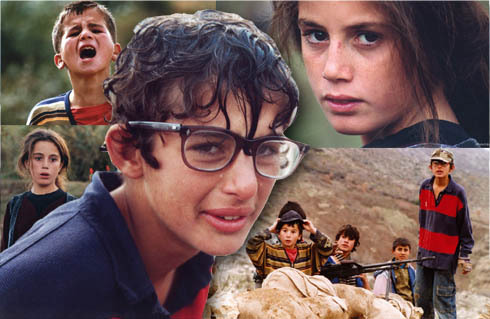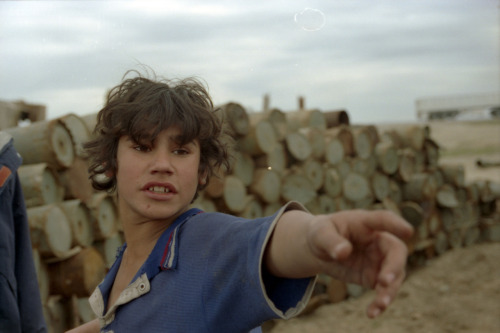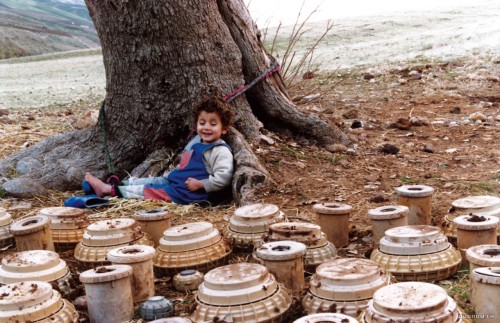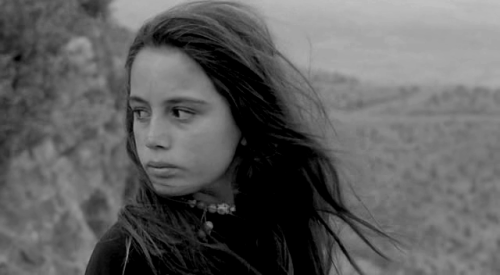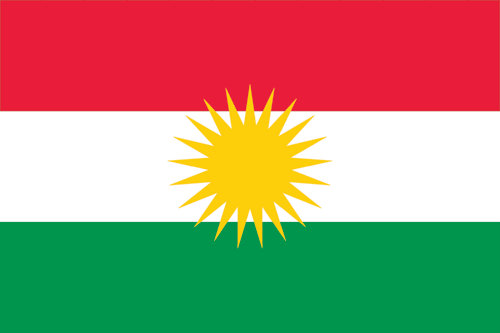Baran
Directed By: Majid Majidi
Written By: Majid Majidi
Baran is a film that requires patience from the viewer as it follows the gradual transformation of an Iranian named Lateef from a lower working class and hot tempered boy mature into a man who learns to be selfless for the sake of love. Recognition for his deeds often go unrecognized by his love for Rahmat, the Afghani girl disguised as a boy in order to work, but it hardly matters as the now matured Lateef decides to immerse himself in something grander than himself. Thanks to today’s entertainment industry, love is a common theme that is consistently shoved in the audience’s faces as this overly sweet and blissful feeling portrayed at the most superficial level. What Baran shows viewers is the display of self-sacrifice as a true test of love and that true love for another person often does not end in an ideal situation because in the end, we do not live in a fairy –tale world. Our lives are complicated by the social and political issues of our time. In the case of Rahmat whose real name is Baran and Lateef, the policies of Iran surrounding Afghan refugees and the general plight of Afghans due to continuous war makes Lateef's hopes to be with Baran next to impossible despite his wholehearted efforts.
Lateef, the main character of this film, works for Memar, the overseer of a construction site who has a pseudo-father role. Memar hires many Afghan refugees for cheap labor. While he is indeed exploiting their labor, he attempts to be as fair as possible, perhaps to make up for his sense of guilt. When Soltan, an Afghan worker, falls and hurts himself, he agrees to hire Soltan's son Rahmat, and he refuses to heed the Iranian Turks request for more pay than the Afghan refugees. The scenes filmed at the construction site depict the sheer harshness of physical labor that Afghan refugees undergo in order to make ends meet. The sight of Rahmat attempting to complete such tasks is quite comical as she is obviously not cut out for a "man's job." Memar assigns her to Lateef's job, serving tea and cooking meals which she is so much more competent at doing. In this way, Majidi asserts traditional gender roles in that the girl succeeds at housewife duties and fails at tasks involving manual labor.
The weather is consistently quite wretched, always raining and downcast. The weather definitely is a reference to the title of the film Baran, which means rain, and is actually Rahmat's real name. The word Baran embodies the tone of the situation, a despondency woven throughout the film. No matter what Lateef does, his love for Baran will not work out and that is due to the political situation which is interestingly never directly addressed. As Afghan refugees, Baran and her family are subjected to a life of poverty and denied any rights of citizenship. The concept of legitimizing a national identity is seen through Lateef's character and how much pride he takes in being at least an Iranian citizen, if nothing else. Baran is also necessary for the enrichment of nature, similar to how the despondency of the situation was necessary for the enrichment and maturation of Lateef's character.
An interesting point about Baran's character is that she is completely silent throughout the film. The only access we get to Baran is through the visual with the camera lingering on her face. As a viewer, one tries to detect any sort of emotion in her face which tends to be void of any sort of strong emotion. The silence of Baran may symbolize the silenced and marginalized voices of women refugees. In the film, Afghan male refugees obviously undergo a sense of discrimination but are still given a voice in complaining about their situations. They are given more agency than the girl, who has to be disguised as a boy in order to take any sort of action or control in alleviating her situation. Also, the fact that Lateef saves her from being caught by the immigration officials undermines her agency and plays into the notion of women needing the aid of men in order to survive.
The overall poetic and lyrical quality of the film is supplemented by the contemplative mood set by lengthy shots that allow the audience to soak in the depth of emotion pervasive in many scenes. Baran is definitely a film I would recommend for everyone to see, as it exemplifies the beauty of self-growth and love in an environment entangled with issues out of our control.
http://moviessansfrontiers.
http://moviessansfrontiers.
reliance on facial expressions of the viewers to tell the story.
Criticism of the trailer for the film Baran
http://www.youtube.com/watch?
- opens up with "in a world where women are forbidden to work…. " even though the premise of the film does not center on the subordination of women but more on lateef's development as a character/ the west loves playing up the gender stereotypes in the middle east even when it isn't completely relevant
-- narrator's voice and music is very misleading; has a playful, faraway, orientalist flavor to it when the movie actually has a more serious tone and universal themes
- at :30… the music completely ruins the scene, takes away from the impact of the characters' powerful facial expressions.
-also the scene where Lateef sells his passport/identification card is misplaced, makes it seem as if baran takes it in order to fulfill her disguise as a boy
Directed By: Majid Majidi
Written By: Majid Majidi
Baran is a film that requires patience from the viewer as it follows the gradual transformation of an Iranian named Lateef from a lower working class and hot tempered boy mature into a man who learns to be selfless for the sake of love. Recognition for his deeds often go unrecognized by his love for Rahmat, the Afghani girl disguised as a boy in order to work, but it hardly matters as the now matured Lateef decides to immerse himself in something grander than himself. Thanks to today’s entertainment industry, love is a common theme that is consistently shoved in the audience’s faces as this overly sweet and blissful feeling portrayed at the most superficial level. What Baran shows viewers is the display of self-sacrifice as a true test of love and that true love for another person often does not end in an ideal situation because in the end, we do not live in a fairy –tale world. Our lives are complicated by the social and political issues of our time. In the case of Rahmat whose real name is Baran and Lateef, the policies of Iran surrounding Afghan refugees and the general plight of Afghans due to continuous war makes Lateef's hopes to be with Baran next to impossible despite his wholehearted efforts.
Lateef, the main character of this film, works for Memar, the overseer of a construction site who has a pseudo-father role. Memar hires many Afghan refugees for cheap labor. While he is indeed exploiting their labor, he attempts to be as fair as possible, perhaps to make up for his sense of guilt. When Soltan, an Afghan worker, falls and hurts himself, he agrees to hire Soltan's son Rahmat, and he refuses to heed the Iranian Turks request for more pay than the Afghan refugees. The scenes filmed at the construction site depict the sheer harshness of physical labor that Afghan refugees undergo in order to make ends meet. The sight of Rahmat attempting to complete such tasks is quite comical as she is obviously not cut out for a "man's job." Memar assigns her to Lateef's job, serving tea and cooking meals which she is so much more competent at doing. In this way, Majidi asserts traditional gender roles in that the girl succeeds at housewife duties and fails at tasks involving manual labor.
The weather is consistently quite wretched, always raining and downcast. The weather definitely is a reference to the title of the film Baran, which means rain, and is actually Rahmat's real name. The word Baran embodies the tone of the situation, a despondency woven throughout the film. No matter what Lateef does, his love for Baran will not work out and that is due to the political situation which is interestingly never directly addressed. As Afghan refugees, Baran and her family are subjected to a life of poverty and denied any rights of citizenship. The concept of legitimizing a national identity is seen through Lateef's character and how much pride he takes in being at least an Iranian citizen, if nothing else. Baran is also necessary for the enrichment of nature, similar to how the despondency of the situation was necessary for the enrichment and maturation of Lateef's character.
An interesting point about Baran's character is that she is completely silent throughout the film. The only access we get to Baran is through the visual with the camera lingering on her face. As a viewer, one tries to detect any sort of emotion in her face which tends to be void of any sort of strong emotion. The silence of Baran may symbolize the silenced and marginalized voices of women refugees. In the film, Afghan male refugees obviously undergo a sense of discrimination but are still given a voice in complaining about their situations. They are given more agency than the girl, who has to be disguised as a boy in order to take any sort of action or control in alleviating her situation. Also, the fact that Lateef saves her from being caught by the immigration officials undermines her agency and plays into the notion of women needing the aid of men in order to survive.
The overall poetic and lyrical quality of the film is supplemented by the contemplative mood set by lengthy shots that allow the audience to soak in the depth of emotion pervasive in many scenes. Baran is definitely a film I would recommend for everyone to see, as it exemplifies the beauty of self-growth and love in an environment entangled with issues out of our control.
http://moviessansfrontiers.
http://moviessansfrontiers.
reliance on facial expressions of the viewers to tell the story.
Criticism of the trailer for the film Baran
http://www.youtube.com/watch?
- opens up with "in a world where women are forbidden to work…. " even though the premise of the film does not center on the subordination of women but more on lateef's development as a character/ the west loves playing up the gender stereotypes in the middle east even when it isn't completely relevant
-- narrator's voice and music is very misleading; has a playful, faraway, orientalist flavor to it when the movie actually has a more serious tone and universal themes
- at :30… the music completely ruins the scene, takes away from the impact of the characters' powerful facial expressions.
-also the scene where Lateef sells his passport/identification card is misplaced, makes it seem as if baran takes it in order to fulfill her disguise as a boy








